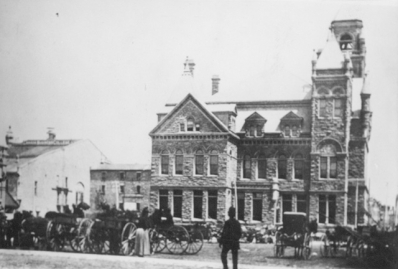Printing Updates
Daily print balances for black and white and colour printing change January 2, 2026. The new daily print balance is 40 cents. Members receive four free black and white copies or two free colour copies.
Large format and vinyl printing pricing also change on January 2. Visit for updates.
All Branches and Bookmobile Stops
Published: Monday, December 22, 2025 - 2:00pm
Lynden Branch - Extended Access Today
Due to limited Staffing, Lynden Branch will be open today from 1-6pm with Extended Access services only. We apologize for any inconvenience.
Published: Monday, December 22, 2025 - 12:00pm
Bookmobile Service - Holiday Schedule
Bookmobile is off the road from December 25-27, December 31, and January 1st. Visit for our Holiday Schedule.
Published: Monday, December 22, 2025 - 9:00am
Central Library, Fourth Floor Closure: Friday, January 2
Due to the setup for the Noon Hour Concert, the Fourth Floor at Central Library will be closed on Friday, January 2. Makerspace and Newcomer Learning Centre will remain open. Floors 1-3 have spaces to work and study.
Published: Friday, December 19, 2025 - 5:00pm
All Branches Closed for Boxing Day
All branches close on Friday, December 26, 2025 for Boxing Day . This includes branches with Extended Access.
All Branches and Bookmobile Stops
Published: Monday, December 15, 2025 - 11:00am
December 24, Christmas Eve - Early Closure
All HPL Branches close early on Wednesday, December 24 at 1pm. All locations are also closed on Christmas Day, Thursday, December 25, and Boxing Day, Friday, December 26. Visit for our Holiday Schedule.
All Branches and Bookmobile Stops
Published: Monday, December 15, 2025 - 11:00am
December 31, New Year's Eve - Early Closure
All HPL Branches close early on Wednesday, December 31 at 1pm. All locations are also closed on New Year's Day, Thursday, January 1st. Regular service hours resume on Friday, January 2.
All Branches and Bookmobile Stops
Published: Monday, December 15, 2025 - 11:00am
All Branches Closed for Christmas
All branches close on Thursday, December 25, for Christmas. This includes branches with Extended Access.
All Branches and Bookmobile Stops
Published: Monday, December 15, 2025 - 11:00am
All Branches Closed Sunday December 28
All branches close on Sunday, December 28, 2025. This includes branches with Extended Access.
All Branches and Bookmobile Stops
Published: Monday, December 15, 2025 - 11:00am
All Branches Closed for New Years Day
All branches close on Thursday January 1 for New Years Day. This includes branches with Extended Access.
All Branches and Bookmobile Stops
Published: Monday, December 15, 2025 - 11:00am
Study Halls - Holiday Break
Branch Study Halls are paused Friday, December 19, 2025 through Monday, January 5, 2026. Central Library Study Hall hours resume Spring 2026.
www.hpl.ca/study-halls
All Branches and Bookmobile Stops
Published: Tuesday, December 9, 2025 - 9:15am
Replacement and Damage Fees
Bring back your borrowed library items (due Oct 1 or later) within 28 days to avoid a replacement or lost fee. We'll remove the fee when you bring back your overdue items.
All Branches and Bookmobile Stops
Published: Thursday, September 11, 2025 - 3:00pm













